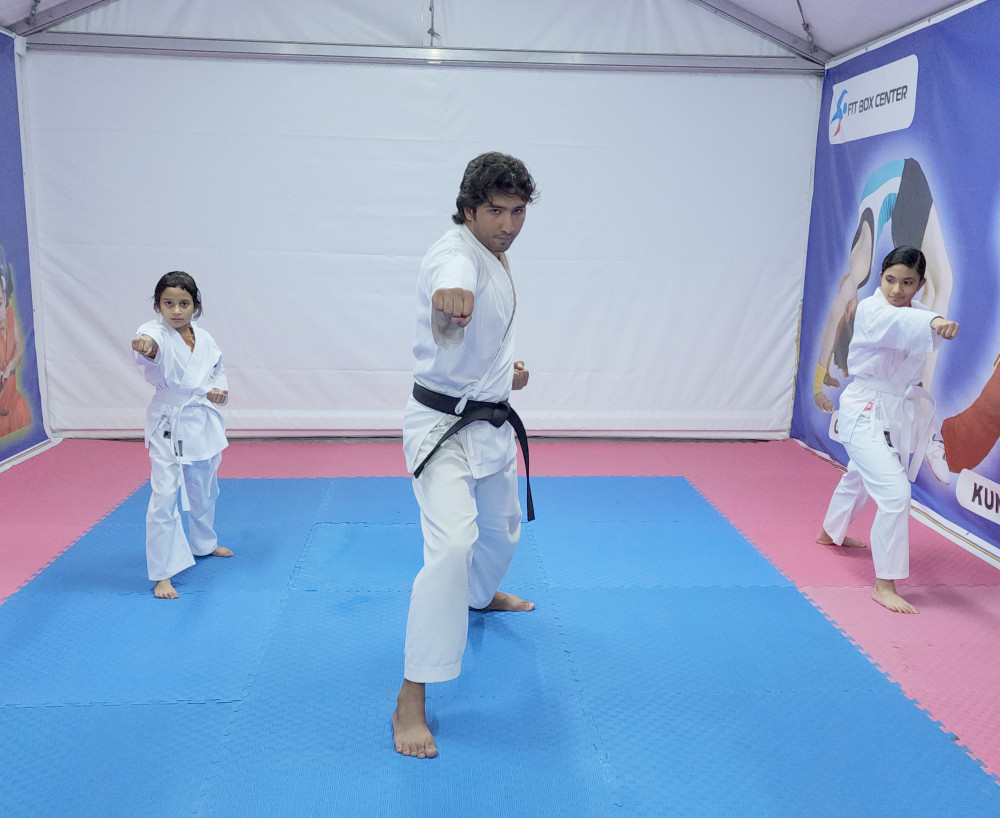
White Belt the Initial Step in Martial Arts Karate
2024-05-01 - karateMartial arts, particularly karate, is a journey of
self-discovery, discipline, and physical mastery. At the heart of this journey
lies the white belt, the symbolic representation of a beginner's path towards
excellence. In this article, we delve into the significance of the white belt,
the essential techniques for beginners, and the mindset required to excel in
martial arts.
Introduction to White Belt in Martial Arts
The white belt signifies purity, innocence, and the
beginning of a journey. It is a blank canvas upon which the practitioner will
paint their skills and experiences. For many, stepping onto the dojo mat for
the first time with a white belt tied around their waist is a moment of
anticipation and excitement.
Understanding the Significance of White Belt
Contrary to popular belief, the white belt holds immense
importance in martial arts. It represents a willingness to learn, humility, and
an open mind. Every black belt master was once a white belt beginner, embodying
the principles of perseverance and dedication.
Basic Movements and Techniques for White Belts
Stances
The foundation of martial arts lies in proper stances. White
belts learn the importance of balance, stability, and posture through basic
stances such as the front stance, back stance, and horse stance.
Punches and Kicks
White belts are introduced to fundamental punches like the
jab, cross, and hook, along with basic kicks such as front kicks, side kicks,
and roundhouse kicks. These techniques lay the groundwork for more advanced
combinations and movements.
Blocks
Effective defense is as crucial as offense. White belts
learn various blocking techniques to protect themselves from strikes and
attacks, including high blocks, low blocks, and inward blocks.
Importance of Discipline and Respect
Martial arts instills discipline and respect in its
practitioners from the very beginning. White belts are taught to bow before
entering and leaving the dojo, to listen attentively to their instructors, and
to treat their fellow students with courtesy and respect.
Progression System in Martial Arts
Belt Ranking System
The belt ranking system serves as a roadmap for progression
in martial arts. White belts strive to advance through the ranks, earning
colored belts as they demonstrate proficiency and mastery of techniques.
Achieving Higher Belts
Each belt level signifies a deeper understanding of martial
arts principles and a commitment to personal growth. White belts set their
sights on advancing to the next level, embracing the challenges and
opportunities for learning along the way.
Setting Goals as a White Belt
Goal-setting is essential for progress in martial arts.
White belts are encouraged to set both short-term and long-term goals, whether
it's mastering a specific technique, competing in a tournament, or achieving a
higher belt rank.
Overcoming Challenges and Frustrations
The journey of a white belt is not without its challenges.
From struggling with new techniques to facing setbacks in training, white belts
learn the value of perseverance and resilience in the face of adversity.
The Role of Practice and Consistency
Practice makes perfect, and consistency is key to
improvement in martial arts. White belts are encouraged to dedicate themselves
to regular training, honing their skills and refining their techniques with
each session.
Building Confidence and Self-Esteem
As white belts progress in their training, they gain
confidence in their abilities and develop a sense of self-esteem. Martial arts
empowers individuals to believe in themselves and their potential to overcome
obstacles both inside and outside the dojo.
Safety Measures and Injury Prevention
Safety is paramount in martial arts training. White belts
are taught proper warm-up and stretching techniques to prevent injuries, and
instructors closely monitor students to ensure they practice with caution and
mindfulness.
The Mental Aspect of Martial Arts Training
Martial arts is not just about physical prowess; it also
cultivates mental fortitude and emotional resilience. White belts learn to
focus their minds, control their emotions, and maintain a positive attitude in
the face of challenges.
Incorporating Martial Arts into Daily Life
The lessons learned on the dojo mat extend beyond training
sessions. White belts discover how to apply the principles of martial arts,
such as discipline, respect, and perseverance, to their daily lives, fostering
personal growth and development.
Finding the Right Dojo or Training Facility
Choosing the right dojo or training facility is crucial for
white belts embarking on their martial arts journey. Factors such as instructor
experience, class atmosphere, and proximity should be considered when selecting
a place to train.
Understanding the Philosophy behind Martial Arts
At its core, martial arts is a way of life—a philosophy that
encompasses physical, mental, and spiritual development. White belts are
introduced to the rich history and philosophy of martial arts, gaining a deeper
appreciation for the art form beyond its physical techniques.
Conclusion
The white belt symbolizes the beginning of an extraordinary
journey—a journey of self-discovery, growth, and transformation. With
dedication, perseverance, and an unwavering spirit, white belts can navigate
the challenges and embrace the rewards that martial arts has to offers.












